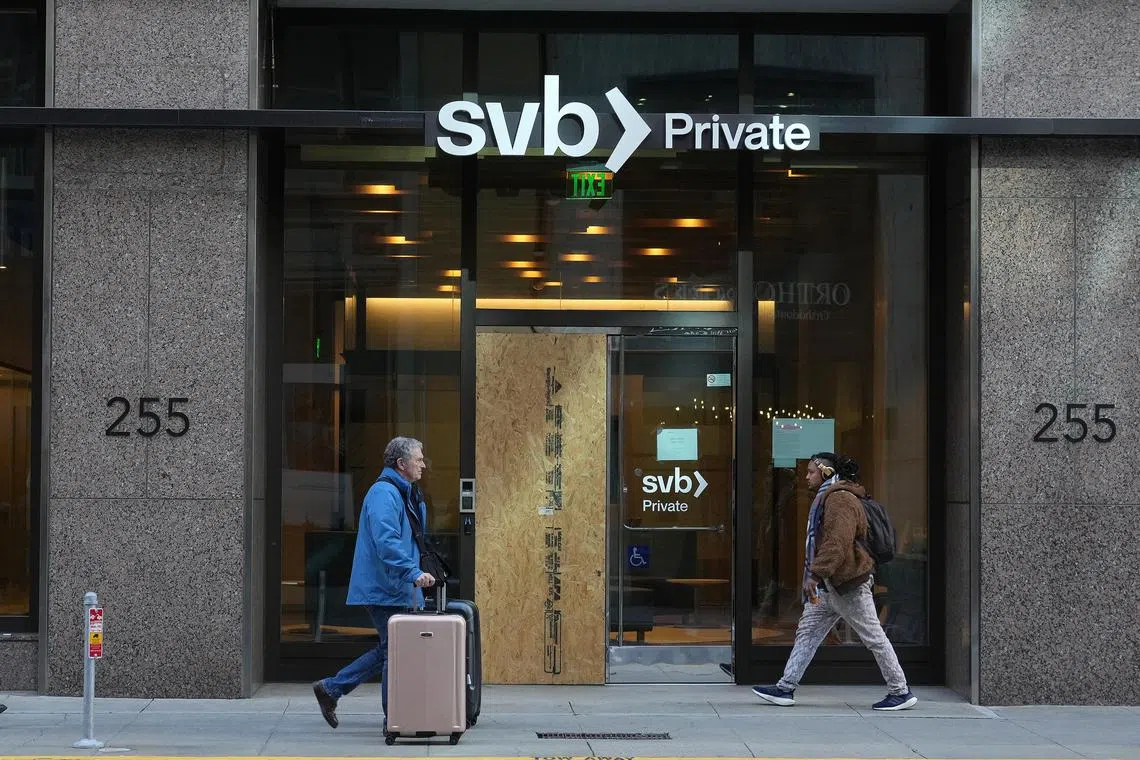What caused Silicon Valley Bank’s failure?
Sign up now: Get ST's newsletters delivered to your inbox

The FDIC announced on Friday that Silicon Valley Bank was shut down and placed under its receivership.
PHOTO: NYTIMES
Follow topic:
NEW YORK – SVB Financial Group’s shutdown and takeover by banking regulators on Friday can be traced to the United States Federal Reserve raising interest rates
Here is the sequence of events that led to Silicon Valley Bank’s (SVB) failure:
Federal Reserve raises rates
The Fed has been raising interest rates from their record-low levels since 2022 in its bid to fight inflation.
Investors have less appetite for risk when the money available to them becomes more expensive because of higher rates.
This weighed on technology start-ups – the primary clients of SVB – because it made their investors more risk-averse.
Some SVB clients face cash crunch
As higher interest rates caused the market for initial public offerings to shut down for many start-ups and made private fund raising more costly, some SVB clients started pulling money out to meet their liquidity needs.
This culminated in SVB looking for ways this week to meet its customers’ withdrawals.
SVB sells bond portfolio at a loss
To fund the redemptions, SVB sold on Wednesday a US$21 billion (S$28.4 billion) bond portfolio consisting mostly of US Treasuries.
The portfolio was yielding it an average of 1.79 per cent, far below the current 10-year Treasury yield of around 3.9 per cent.
This forced SVB to recognise a US$1.8 billion loss, which it needed to fill through a capital raise.
SVB announces stock sales
SVB announced on Thursday that it would sell US$2.25 billion in common equity and preferred convertible stock to fill its funding hole.
Its shares ended trading on the day down 60 per cent, as investors fretted that the deposit withdrawals would push it to raise even more capital.
Stock sale collapses
Some SVB clients pulled their money from the bank on the advice of venture capital firms such as billionaire entrepreneur Peter Thiel’s Founders Fund, Reuters reported.
This spooked investors such as General Atlantic that SVB had lined up for the stock sale, and the capital raising effort collapsed late on Thursday.
SVB goes into receivership
SVB scrambled on Friday to find alternative funding, including through a sale of the company. Later that day, however, the Federal Deposit Insurance Corporation (FDIC) announced that SVB had been shut down and placed under its receivership.
The FDIC added that it would seek to sell SVB’s assets and future dividend payments may be made to uninsured depositors. REUTERS

